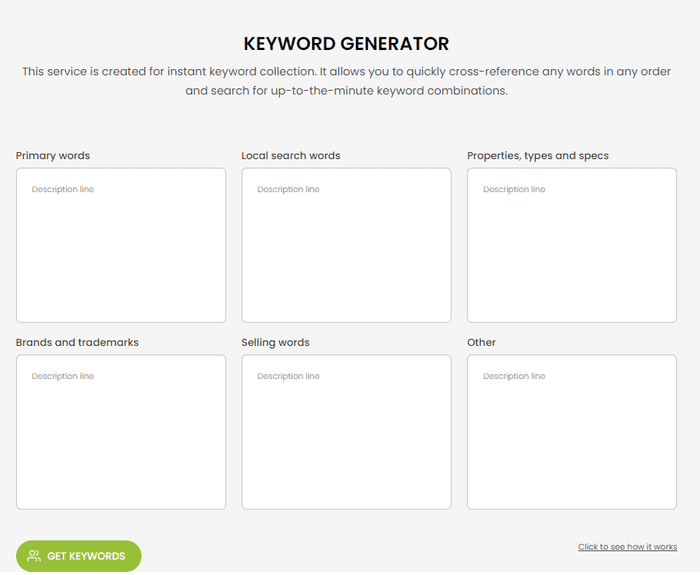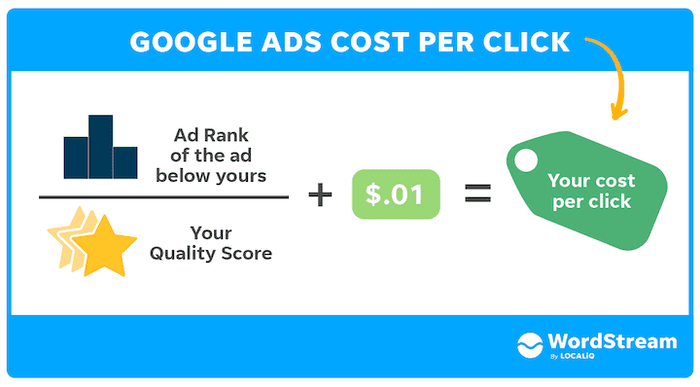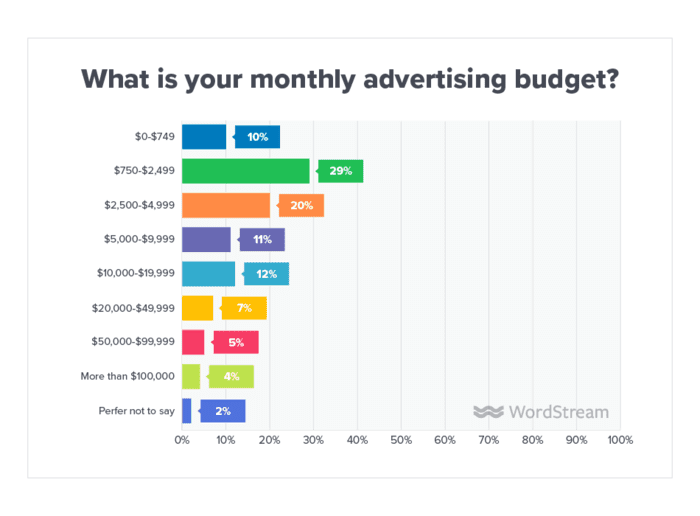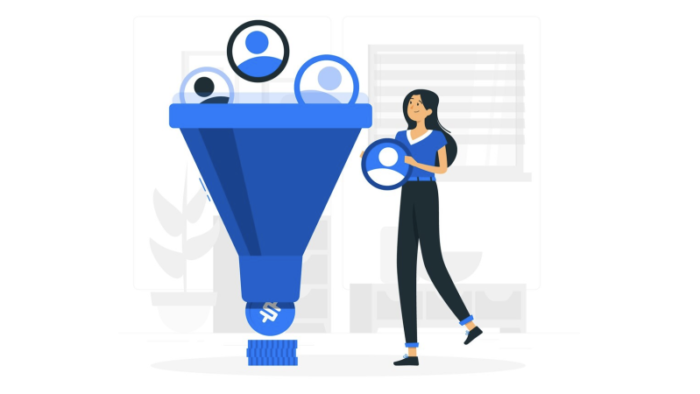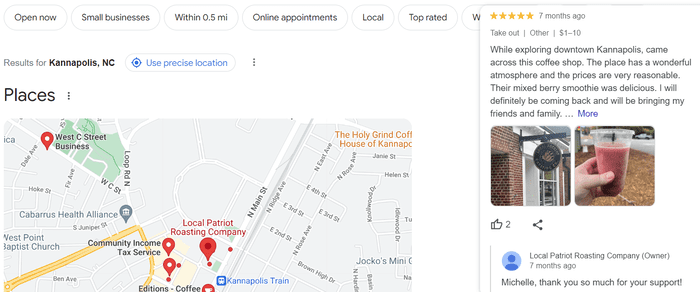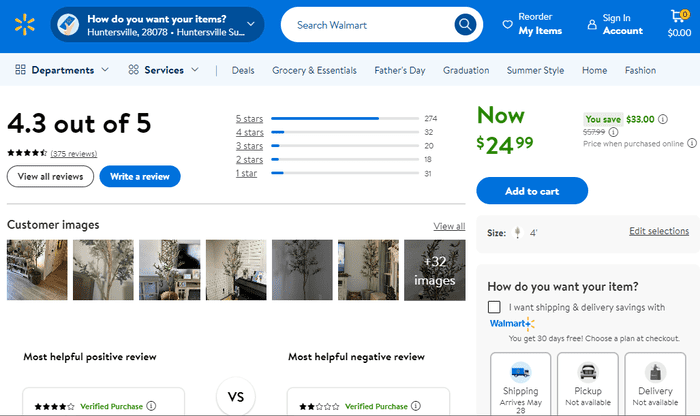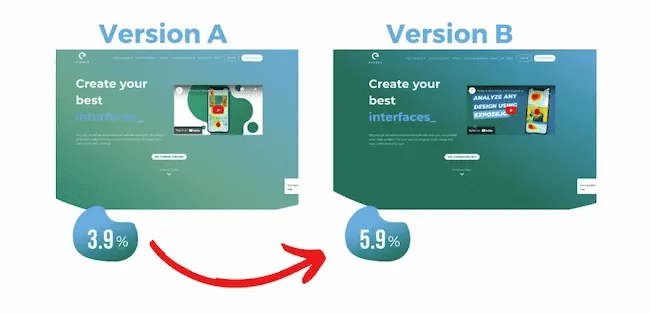Effective Conversion Rate Tips for Digital Marketers to Boost Bottom Lines
Conversion Rate Optimization (CRO) is key to increasing the percentage of consumers taking desired actions, like clicks, adds to cart, and purchases.
Effective CRO identifies and improves elements hindering performance, ensuring marketing success.
Marketers work diligently to get consumers to take action—whether its filling out a form to guide a customer through the sales funnel or encouraging signing up for a newsletter. The lower your conversion rate is, the less likely your business will be to thrive and survive.
The importance of consistently improving conversion rates can’t be understated. It requires constant attention and effort to ensure you’re maximizing every potential opportunity you have to capture the user’s attention and motivate them to take action.
That’s where conversion rate optimization comes into play.
The higher your conversion rate, the more likely your business will flourish, even in the most competitive industries. In this article, we’ll explore top conversion rate tips to keep customers engaged and coming back for more.
UNmiss offers numerous valuable tools to help marketers improve their conversion rates. We recommend exploring these tools and their wide range of benefits to help improve your conversions and user experience.
Conversion Rate Optimization (CRO) 101 for Digital Marketers
Marketing is more than getting visitors to your website. It requires a strategic, multi-faceted approach that encompasses every step of the customer journey.
Without marketing, a customer may never find or hear of your business. Marketing transcends more than just the awareness stage of the customer journey.
It follows customers at every conversion funnel stage and beyond, encouraging customers to remain loyal to the business even after a purchase. This is why it’s crucial to ensure your conversion rate optimization is top-notch to help facilitate a seamless path toward purchase across multiple channels and optimize the performance of your digital marketing campaigns.
Through conversion rate optimization, businesses benefit from higher-quality leads, increased revenue, and improved customer retention.
Factors that Impact the Conversion Funnel
There are myriad reasons why customers may not be converting with your business. Some of these reasons are more complex while others may be fairly straightforward.
These bottlenecks can significantly impact sales and impede the customer journey. To ensure your business isn’t getting in the way of itself, it’s crucial to assess what may be causing potential roadblocks by evaluating your digital marketing efforts and analyzing user behavior to identify obstacles and improve conversion rates.
A few of these detrimental conversion rate factors include:
- A poorly designed website
- Confusing navigation structure
- CTAs below the fold
- Broken links or faulty redirects
- Slow website
- Too much information
- Too little information
- Poor quality images or video
- Lack of mobile optimization
- Too many steps in the checkout process
As you can see, there are many diverse ways your conversion rate can be negatively affected. Many of these issues are common, but when left unaddressed for periods of time can significantly impact sales.
While it’s nearly impossible to identify every issue impacting your user experience, challenges can be addressed earlier by taking a proactive approach towards optimizing conversion rates.
Implementing a robust CRO strategy is a game-changer, and ensures quality prospects are effortlessly guided to the purchase stage.
Essential Conversion Rate Optimization Tips
Getting customers to your website is only part of the battle. Even after you’ve optimized your keyword research strategy, you need to keep site visitors’ interest, show why you’re the best option, highlight your strengths, and ensure an easy purchase process as part of your overall marketing strategy.
Nurturing leads at every step of the sales funnel is a must. Integrating effective digital marketing strategies can help optimize the sales funnel by refining targeting, messaging, and creative elements based on real-time data. To do so, consider the following challenges and how they can be addressed:
Grow Website Traffic
If customers can’t find you, you won’t earn their business.
Proper search engine optimization (SEO) is a must to ensure customers can find you the next time they’re seeking a solution to a challenge your brand can help with. In the digital marketing sector, SEO plays a main role in driving organic search traffic to your website, inherently improving your conversion rates. Keep in mind, that the more visitors that land on your website through various marketing channels, the more likely they’ll be to convert.
To better appear for the terms that matter most to your customers, it’s crucial to conduct thorough keyword research.
Keyword research enables you to identify the terms customers are searching for in your industry, how challenging it will be to rank for a given term, how popular a given term or phrase is, and whether the keyword term has informational or transactional intent.
Tools such as UNmiss, Ahrefs, and Semrush are indispensable for performing keyword research and are available to marketers for a nominal fee.
UNmiss Keyword Generator tool
In addition to keyword research, businesses can also lean on marketing strategies such as social media marketing, email marketing, and pay-per-click (PPC) advertising to boost brand visibility.
For social media and email marketing, ensure you establish a regular cadence of posts and emails so customers become accustomed to knowing exactly when and how often they’ll hear from you. A regular frequency helps establish brand recognition, encourages shareability, and can lead to more sales.
PPC, on the other hand, requires payment in exchange for improved search visibility for keyword terms. It’s crucial to set a budget to ensure you’re not overspending with your PPC efforts.
PPC monthly advertising budgets vary based on numerous factors such as company size and marketing department budgets. However, 29% of advertising budgets fall within $750-$2,499 per month.
Whether relying on a free marketing effort or paid, driving more qualified traffic to a website is the first step in improving conversion rates and sales.
Improve Checkout Processes
If customers aren’t able to smoothly checkout with your business, even the most effective marketing campaign won’t convert them into actual customers. A well-designed landing page can guide users through the checkout process efficiently, ensuring they complete their purchase.
Lengthy and complex checkout processes are the top culprits for checkout abandonment. If a customer has to click through numerous pages, input redundant information multiple times, or have to fill in too many fields, they’ll likely take their business elsewhere.
The typical checkout process step-by-step is:
shopping cart > billing info > shipping info > shipping method > preview order > payment > confirmation
Anything more than these seven steps may cause customers to bounce. A few other reasons customers often leave a website during the checkout process include:
- Hidden Charges: Additional costs added at the time of checkout may cause customers to perceive your business as deceptive, damaging your brand’s reputation.
- Non-inclusive Shipping Options: If customers get to a checkout and realize it’s an additional $25 to ship a product, they may feel frustrated by the additional cost. It’s better to be upfront and honest with customers regarding shipping fees, or to build shipping fees into your product costs.
- Errors: Have you ever tried to purchase a product only to encounter errors or crashes? If you answered yes, you likely became frustrated with the business and didn’t complete your purchase.
- Security: Consumers expect and need a safe shopping experience. Ensure you have proper security in place to prevent identity theft.
- Overly Complex Checkout: If consumers can’t check out in a few steps, your checkout process is likely too overwhelming for the average customer. Keep your checkout as simple as possible.
- Forced Account Creation: Customers shouldn’t have to sign up for an account to purchase from your business. Always allow a guest checkout option for those who don’t want to take the time to create an account.
- No Autofill: Consumers have become accustomed to autofill fields when checking out. This is one simple way to speed up the checkout process and make purchasing even easier for your customers. Another way to remedy this issue is by allowing customers to continue with their Google or Apple accounts or their social media profiles.
- Bad Mobile Experience: Customers are using their phones to make purchases more often than ever. A study recently found that 37% of consumers say they use mobile one-click checkout monthly or more often, lending to the importance of mobile optimization.
Gucci online checkout process example
Integrate Social Proof
Consumers trust other consumers more than businesses. No matter how much marketers try to persuade a purchase decision, they will be less convincing than a fellow consumer or peer.
When making a purchasing decision, consumers often look for proof the purchase will be worthwhile. The easiest way to showcase consumer feedback is through social proof such as on-page reviews or testimonials that resonate with your target audience.
Social proof is a worthwhile endeavor that can often be integrated within a website in a matter of minutes with tools such as TrustPulse.
Almost every consumer (97%) reads reviews prior to making a purchase. Online reviews are so powerful that product reviews increase sales conversions by 270%.
Google Business Profile review example
By having customer reviews readily available on key pages, such as product pages or front and center on your homepage, you take the guesswork out for potential customers and prominently showcase the reassurance they need to complete a purchase with you.
Social proof is invaluable for your business. It helps build trust, validates customer’s buying decisions, and improves credibility.
Example of on-page social proof on Walmart.com
The Value of Monitoring Your Online Reputation
Customer reviews are also a low-cost investment and can be as simple as encouraging customers to leave a review right after they make a purchase.
Reviews also are a prominent search ranking factor. Businesses that have a high number of reviews and that receive reviews frequently are more likely to appear higher on the search engine results pages.
Additionally, customers typically want to read 10 or more reviews before making a purchase. It’s imperative to have a solid online reputation strategy in place; one that encompasses traditional reviews across popular platforms like Yelp and Google Business Profile, as well as other niche or industry-related directories.
Your online reputation is reflective of your business and what customers are saying matters. An important facet of reputation management is monitoring your reviews and responding to feedback.
For businesses with smaller customer service teams, it can be beneficial to tackle responding to negative reviews first and then shifting your focus to positive reviews after. The industry standard for any customer service response (including responding to reviews) is within 24 hours, although the sooner you can respond the better.
Online reputation management is essential for improving CRO as it helps your brand build its digital presence, highlights the value of your products and services, and establishes your business as a trustworthy, credible resource. It can also help drive organic search traffic to your website, furthering your chances for conversion opportunities.
Google search screenshot
Conduct A/B Testing
A/B testing is an integral component of CRO strategy. It’s one of the oldest tricks in the book, however, it remains a tried and true method for optimizing the performance of marketing campaigns. A/B testing allows you to test two different variants to see what converts best.
It can be used in a variety of ways such as:
- Ad copy
- Adding a customer’s first name in emails
- Button color
- Button placement
- Call-to-action text
- Checkout flow
- Headline optimization
- Shortening contact submission forms
- Subject line optimization
As you can see, there are myriad benefits to conducting A/B testing, many of which help to improve CRO by providing the information necessary to make data-backed decisions.
For example, if half your website visitors saw a red CTA button and the other half saw a blue CTA button, you could effectively measure how many people clicked on each button. The color that got clicked on most often over the course of a specified time would be the clear winner as it’s converting more visitors.
In a real-world application, Expose.io, an AI-powered predictive eye-tracking solution, sought to test different website backgrounds. Users found that the home page was difficult to read because of the low contrast and the navigation was confusing as well.
To remedy these issues, Expose.io created two diverse home pages to better guide the user experience and highlight important information.
They leveraged their own eye tracking software data as research for building a better home page experience. Next, they ran a heat map A/B test to see which design attracted the user’s attention most.
The A/B testing provided compelling results, proving the new design to be more effective with capturing engagement, drawing 40% more attention to the desired areas of the home page, and a 25% increase in CTA clicks.
This quick example highlights the efficacy of CRO A/B testing in not only attracting more consumer attention but also motivating click-throughs.
Know the Right Metrics to Track
CRO success can’t be determined without knowing the metrics that matter most, which is why a comprehensive digital marketing program is essential. Utilizing tools like Google Analytics can help in tracking and analyzing these metrics effectively.
Having a firm understanding of these metrics can determine what’s working and what isn’t, and where to reallocate your efforts. It can also help you identify trends in your data, such as if your conversion rate is improving or declining.
There are numerous key metrics to track to determine CRO success and areas for improvement, which may vary depending on your industry and goal. A few worth highlighting include:
- Average Order Value: The average amount of money a customer spends per purchase with your business.
- Bounce Rate: The percentage of visitors who land on your website and leave without completing a conversion.
- Conversion Rate: The percentage of visitors who complete a conversion event, such as clicking a button or completing a purchase.
- Customer Lifetime Value: The average amount of money a customer spends with your business during the entirety of their relationship with you.
- Exit Rate: The number of times visitors leave a website from a single webpage
- Revenue Per Visitor: The average amount of money one visitor generates for your business.
- Time on Page: The average amount of time that a visitor spends browsing your website.
- Page Views Per Visit: The average number of pages a visitor views during a browsing session.
- Projected Return on Spend: How much you spend to gain a lead versus the value of a lead.
To maximize your analysis efforts, it’s important to ensure your CRO goals are SMART (specific, measurable, achievable, relevant, and timely).
Determine what goals are most important for your business to hit, such as getting more monthly newsletter subscribers or decreasing shopping cart abandonments.
Work backward to determine which KPIs will support the identified goal. Avoid focusing on too many KPIs as it can steer you away from your core objectives and cause confusion.
Update your KPIs regularly to align with shifts in consumer behavior preferences and to ensure they continue to align with your key goals.
Recap of Key Takeaways
Conversion rate optimization is a marketing tactic that can’t be neglected. Your business’ success is ultimately tied to how and when consumers convert.
CRO is also telling of the experience potential customers have with your website. Lower conversion rates typically mean customers are finding your site complex, confusing, or difficult to navigate/use.
Other factors that negatively impact CRO is lack of mobile optimization, too many steps in the checkout process, slow loading times, confusing navigation menus, and more. Keeping a pulse on bottlenecks can help improve user experience and drive better conversion rates.
Continue to track and measure performance to ensure you’re maximizing your conversion events. Always refine and revisit your KPIs to keep a pulse on what’s impacting your business most. Integrate your digital marketing efforts into this process to continuously improve and make strategic decisions based on data and metrics.
And, as always, turn to UNmiss and our plethora of free SEO tools that can make a positive difference in your CRO efforts.




